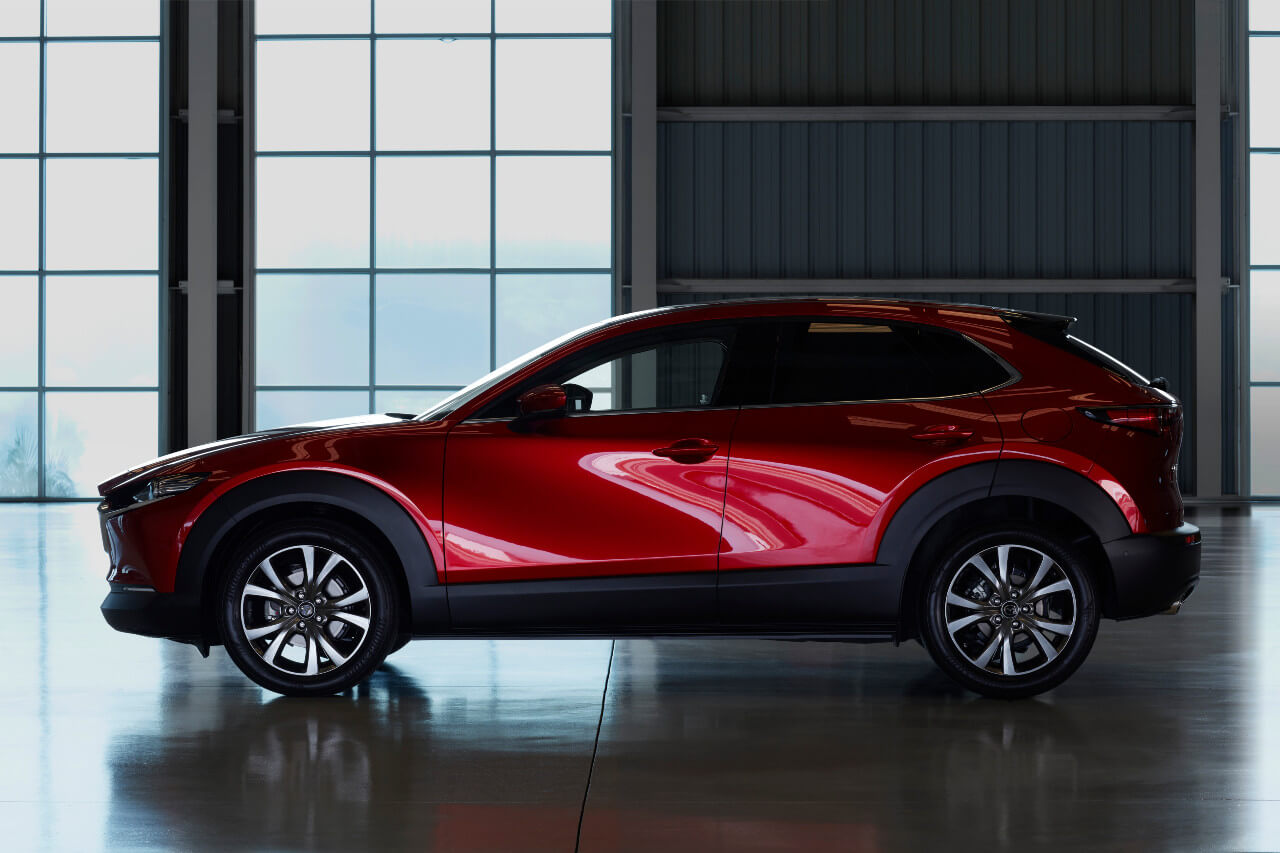Mazda CX-30 Vs. CX-5: Size, Specs Comparison
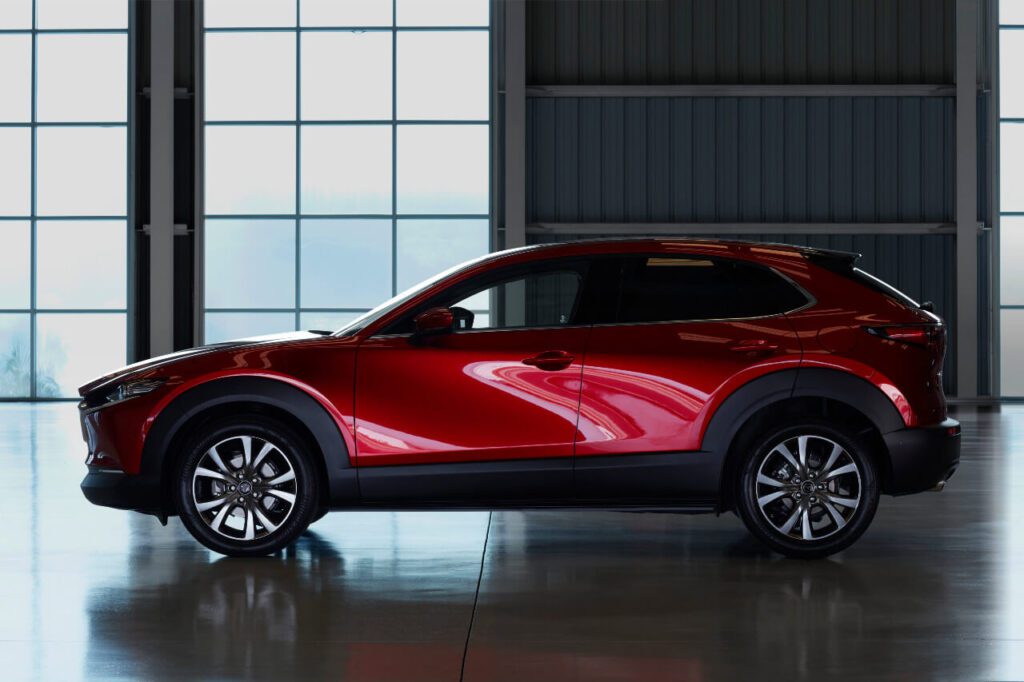
Motorists shopping for a standout crossover SUV can look to two Mazda models and compare the Mazda CX-30 vs. CX-5. The subcompact CX-30 and compact CX-5 often compare favorably to their competitors in areas like handling, responsiveness, and driving joy, but they both tend to be on the smaller side when comparing cargo space and passenger volume.
Still, for those seeking a versatile, fuel-efficient, well-appointed, and fun-to-drive crossover SUV, the Mazda CX-5 and CX-30 models should both be high on any test-drive list.
Like the Mazda CX-5 vs. CX-50, the smaller CX-30 is often cross-shopped with the automaker’s top-selling SUV, the CX-5.
The Mazda CX-30 and CX-5 offer the same or similar interior features and technologies, engine specs, and safety systems. However, they differ quite drastically when it comes to their size, particularly their interior dimensions, including passenger volume and cargo space.
That’s why the focus of our CX-30 vs. CX-5 comparison is how these two Mazda SUVs differ in dimensions. Let’s start by looking at the differences between CX-30 and CX-5 exteriors:
Exterior Dimensions: Mazda CX-30 vs. CX-5 Size Comparison
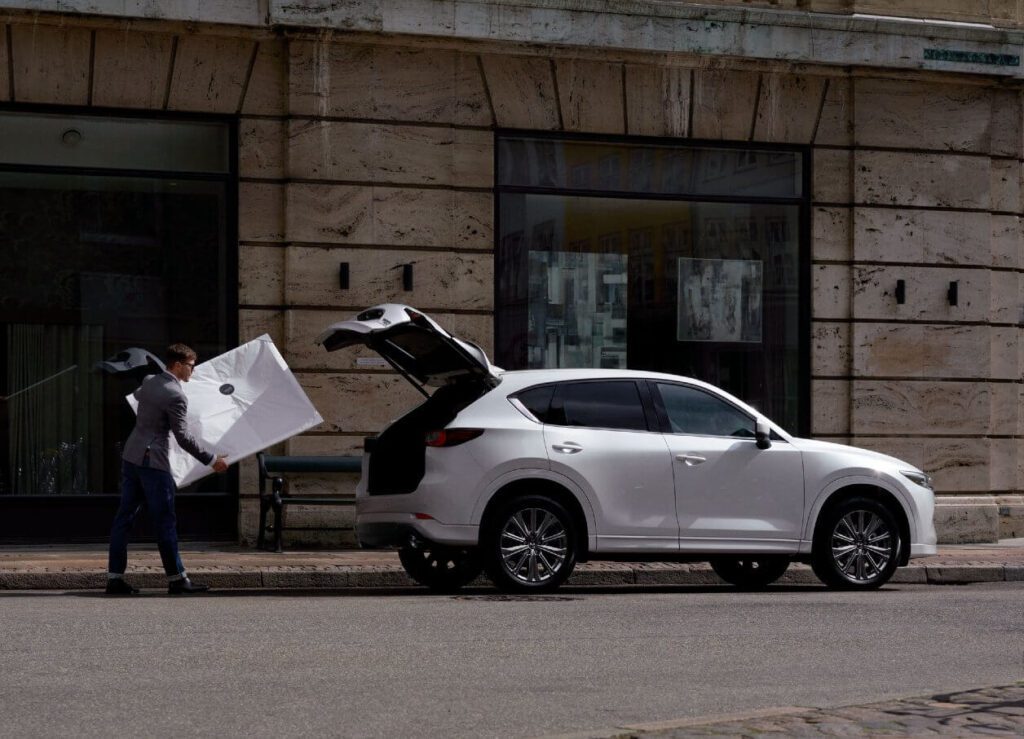
Drivers searching for an agile SUV have two great options in the Mazda CX-30 and the Mazda CX-5. Both crossover SUV models are characterized by spry handling and balance their relatively small footprints with ample space for up to five occupants and plenty of cargo inside their cabins.
Still, the difference between the Mazda CX-30 Vs. CX-5 dimensions is striking. The smaller CX-30 fills the void left by the even smaller CX-3 that has been discontinued in several markets and now represents the entry-level model in the Mazda CUV lineup in North America and elsewhere.
Measuring 173 inches long and riding on a 104.4-inch wheelbase, the Mazda CX-30 subcompact SUV is noticeably shorter than the compact CX-5, which measures 180.1 inches in length, with a 106.2-inch wheelbase.
The Mazda CX-5 is also nearly two inches wider, at 72.6 inches wide compared to the CX-30 at 70.7 inches.
The low-slung CX-30 model stands just 61.7 inches tall in its base trim, wearing 16-inch alloys. Higher trims gain larger 18-inch wheels which raise the small CUV’s height to 62.2 inches tall.
From its roof to the ground, the Mazda CX-5 stands about 65.5 inches tall, again, dwarfing the smaller CX-30.
However, like the similarly low-slung and more rugged Mazda CX-50 model, the CX-30 actually boasts greater ground clearance than the taller CX-5. Comparing the Mazda CX-30 vs. CX-5 ground clearance, you’ll find that the smaller and shorter CX-30 has eight inches of terrain-clearing capabilities, compared to 7.6 to 7.9 inches in the Mazda CX-5.
Mazda CX-5 vs. CX-30 Dimensions: Interior & Passenger Space
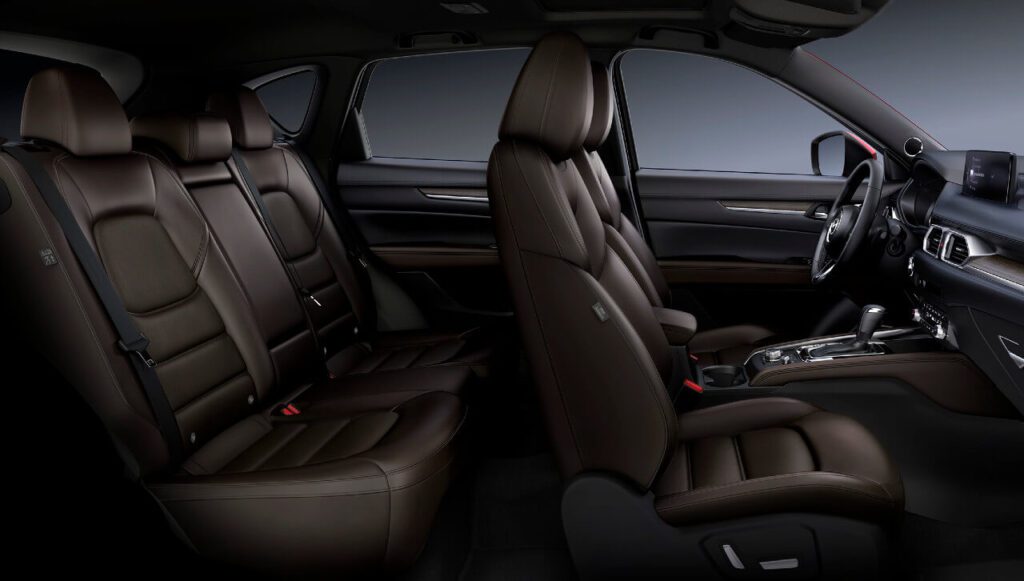
Given the differences between the CX-30 and CX-5 exterior dimensions, it should come as no surprise that the CX-5 compact SUV is also larger when we move to the interior of these two Mazda crossover SUV models. Our Mazda CX-30 vs. CX-5 size comparison reveals the extent to which the CX-5 outsizes its smaller stablemate, and the difference is substantial.
Perhaps the quickest comparison of the Mazda CX-30 Vs. CX-5 interior size and dimensions is simply by looking at the Mazda models’ passenger volume. The total passenger volume inside the Mazda CX-5 reaches 103.6 cubic feet, while in the CX-30, there is 94.1 cubic feet of space for passengers.
With nearly 10 cubic feet more passenger volume, the CX-5 feels substantially more spacious, especially in its second row.
Join Our Newsletter
Never miss a Mazda when you sign up for our email list:
Both of these Mazda crossover SUVs feature five-passenger seating in two rows, with a split-folding second row. Head room is ample in both models, with the CX-30 offering 38.1 inches front and 38.3 inches rear head room, and 39.7 and 39 inches front and rear for the CX-5.
Front leg room is nearly identical for these two Mazda CUVs and won’t be a factor in cross-shopping these models. However, second-row occupants will feel a difference between the CX-30 SUV’s rear leg room compared to the more spacious CX-5.
The Mazda CX-5 offers 39.6 inches of second-row leg room, more than three additional inches compared to the CX-30, at 36.3 inches of rear leg room.
Mazda CX-30 vs. CX-5 Cargo Space
Cargo space is yet another area where the Mazda CX-30 vs. CX-5 dimensions differ significantly. The larger CX-5 accommodates up to 29.1 cubic feet of cargo behind its second row. Lowering the split-folding rear seats uncovers up to 59.3 cubic feet of maximum cargo space in the 2024 Mazda CX-5.
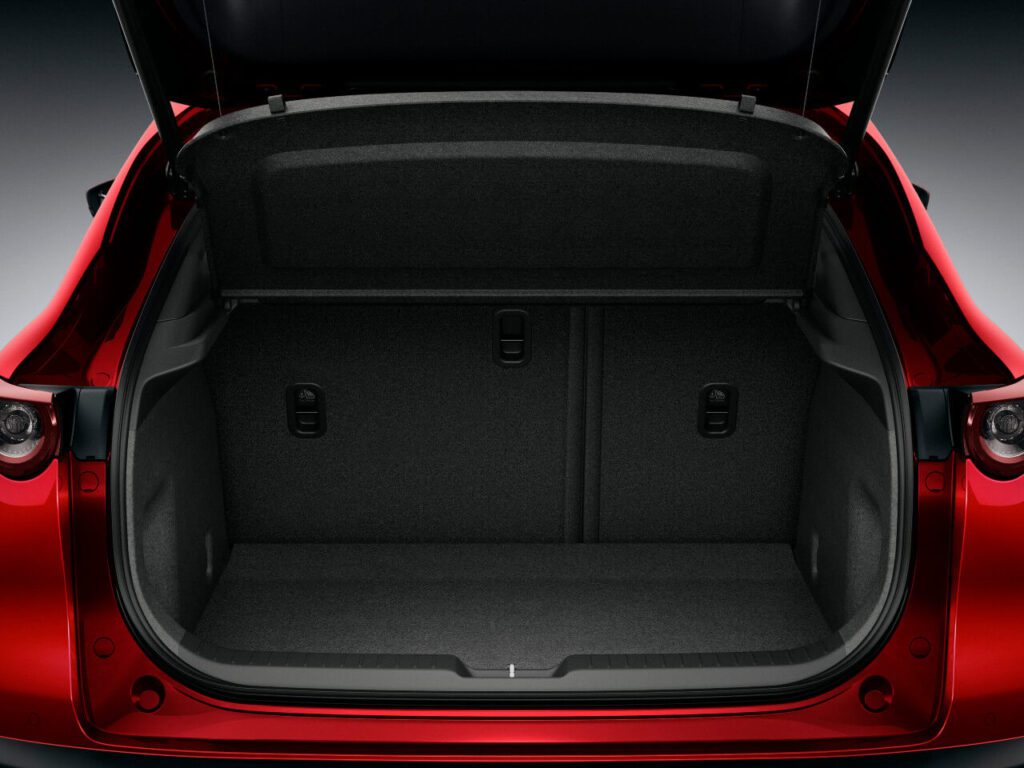
With 20.2 cubic feet of cargo volume behind its back seats, the Mazda CX-30 cargo capacity is more in line with that of the Mazda3 Hatchback than the larger CX-5. The same goes for maximum cargo space, rated at up to 45.2 cubic feet in the CX-30 with rear seating folded.
The Mazda CX-30 gets a more common 60/40-split rear seatback, while the CX-5 continues to offer the more flexible 40/20/40 split-folding rear seating, enabling the center seatback to be lowered separately from the outboard seats.
Mazda CX-30 vs. CX-5 Comparison by the Numbers
| 2024 Mazda CX-30 | 2024 Mazda CX-5 | |
| Length (in.) | 173 | 180.1 |
| Wheelbase (in.) | 104.4 | 106.2 |
| Width (in.) | 70.7 | 72.6 |
| Height (in.) | 61.7 | 66.1 |
| Turning diameter (ft.) | 34.8 | 36 |
| Engine | 2.5L I-4 | 2.5L I-4 |
| Drive type | AWD | AWD |
| EPA-est. City MPG | 26 | 26 |
| EPA-est. Hwy MPG | 33 | 31 |
| Passenger volume (cu. ft.) | 94.1 | 103.6 |
| Seating capacity | 5 | 5 |
| Cargo space (cu. ft.) | 20.2 | 29.1 |
| Max cargo capacity (cu. ft.) | 45.2 | 59.3 |
| Second-row head room (in.) | 38.3 | 39 |
| Second-row leg room (in.) | 36.3 | 39.6 |
Mazda CX-5 vs. Mazda CX-30 Specs: Engine Performance & MPG
There isn’t much separating these two Mazda crossover SUVs in terms of power and performance, as they offer the same standard and available engines. However, the Mazda CX-30 does have a noteworthy edge in several specs.
Standard horsepower and torque are nearly identical, with the CX-30 crossover’s 2.5-liter inline-four engine making 191 horsepower compared to the CX-5 SUV’s version of the automaker’s 2.5-liter unit making 187 horsepower. Both of these Mazda CUV models come standard with 186 pound-feet of torque and i-Activ AWD for the 2024 model year.
Turn to the turbo models of the CX-30 or CX-5 for enhanced power output and performance, with up to 320 pound-feet of torque in either SUV when running premium unleaded fuel.
Whether you compare these Mazda models equipped with the standard, naturally aspirated engine or the available turbocharged variant of the Skyactiv-G 2.5-liter, the smaller CX-30 brings a significant weight advantage.
The CX-30 2.5 S models weigh about 300 pounds less than the CX-5 2.5 S editions. The same goes for the turbo models, with the CX-5 Turbo trims tipping the scales at roughly 300 pounds heavier than the CX-30 Turbo models.
Thanks to its lower curb weight, the Mazda CX-30 offers a bit more brisk acceleration than the CX-5 in both turbo and non-turbo trims. The lighter CX-30 also benefits from higher EPA-estimated fuel economy ratings as a result of its weight savings.
Here’s how the Mazda CX-30 vs. CX-5 0-60 times compare by engine:
- Mazda CX-30 2.5 AWD: 8.1 seconds
- Mazda CX-30 2.5 Turbo: 5.8 seconds
- Mazda CX-5 2.5 AWD: 8.3 seconds
- Mazda CX-5 2.5 Turbo: 6.2 seconds
Both the turbo and non-turbo models of these Mazda crossover SUVs have great throttle response, making them feel faster than they are under lower-speed acceleration.
Comparing the 2024 Mazda CX-5 vs. CX-30 MPG ratings for the 2.5 S base engine trims, you’ll find that the CX-5 earns up to an EPA-estimated 26/31 MPG City/Highway rating. The CX-30 matches the 26 City MPG rating but tops the CX-5 in highway fuel economy, reaching an EPA-estimated 33 MPG.
However, one caveat regarding the 2024 Mazda CX-5 MPG ratings is that it returns its top marks on models equipped with cylinder deactivation and i-Stop technology. Yet, select 2024 CX-5 models are still available without these efficiency-enhancing engine technologies, as in previous CX-5 model years.
For those who prefer to go without the cylinder deactivation and auto start-stop engine technology, the 2024 Mazda CX-5 achieves an EPA-estimated 23/29 MPG (City/Highway), just shy of previous CX-5 model years, which returned a 24/30 MPG rating.
Mazda CX-5 vs. CX-30 Price & Value
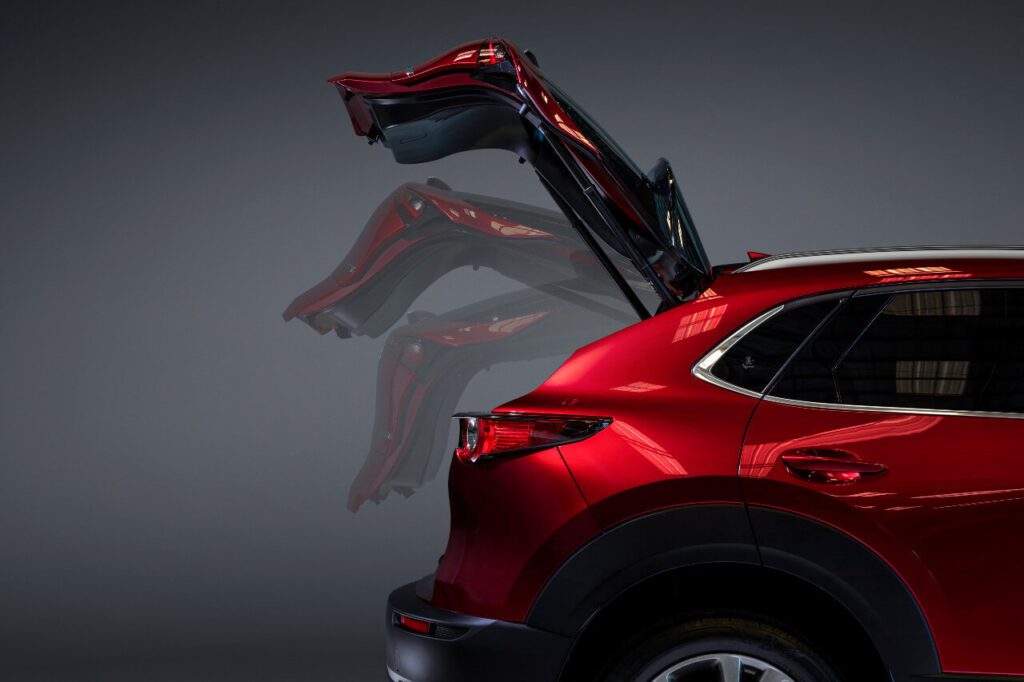
With its starting MSRP of $24,995 for the 2024 model year, the Mazda CX-30 price is significantly lower than the starting Mazda CX-5 price of $29,300. Since these models offer similar standard performance, technology, and features, you’re mainly paying more for the CX-5 SUV’s roomier cabin.
Still, if you’re simply after ample seating room and cargo space, the new Mazda CX-30 presents excellent value, as you get standard AWD and the many of the same features as the larger CX-5 for less.
But purchasing pre-owned could bring the Mazda CX-30 vs. CX-5 price difference to the point where it’s negligible, and at that point, the Mazda CX-5 might win for the most bang for your buck.
Final Thoughts: Comparing Two Standout Crossover SUVs
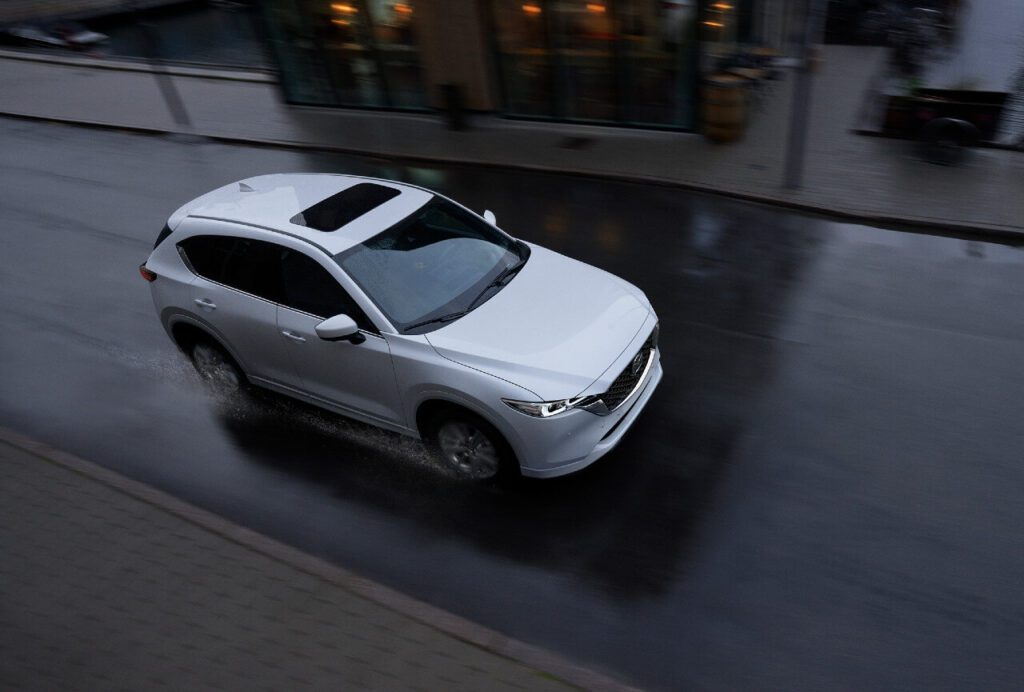
In the end, we think the Mazda CX-5 is the better option for most SUV shoppers, as it pairs a larger, more accommodating interior with sporty driving dynamics rivaling the nimble CX-30. It boasts substantially more cargo space than its smaller stablemate, making it the more versatile option. Acceleration and fuel economy are nearly on par with the CX-30, too.
Still, the smaller Mazda CX-30 is not without its merits. It’s a bit quicker and more fuel-efficient thanks to its lower curb weight. Its maneuverability and handling feel are helped by its slightly lower center of gravity and shorter wheelbase.
The CX-30 has proven to be a worthy alternative to not only the sporty CX-5 and rugged CX-50 compact SUVs, but the Mazda3 Hatchback, too.
It could be the ideal option for those looking to blend the benefits of a hatchback and crossover SUV into one vehicle, as it offers slightly more interior space and cargo capacity than the Mazda3 Hatchback yet more ground clearance than the CX-5 SUV.
But for drivers seeking the best of both worlds – versatility and a fun and fuel-efficient drive – the Mazda CX-5 bests the CX-30.
Join Our Newsletter
Never miss a Mazda when you sign up for our email list:
Frequently Asked Questions
What are the differences between the Mazda CX-30 and CX-5?
The main differences between the Mazda CX-30 and CX-5 are found in their dimensions. A Mazda CX-30 vs. CX-5 size comparison finds that the larger CX-5 offers a roomier interior, including up to 59.3 cubic feet of maximum cargo space. The smaller CX-30 offers up to 45.2 cubic feet of cargo volume. However, due to its smaller size, the CX-30 is slightly quicker and more fuel-efficient.
Is the Mazda CX-5 or CX-30 bigger?
The Mazda CX-5 is bigger than the CX-30, and by a significant margin. New and late-model Mazda CX-5 dimensions measure 180.1 inches in length, with a total passenger volume of 103.6 cubic feet for up to five occupants. By comparison, the smaller Mazda CX-30 measures 173 inches long and boasts 94.1 cubic feet of space for up to five passengers. The CX-5 also has more cargo space than the CX-30.
Is the Mazda CX-30 too small?
The Mazda CX-30 is similar in size to the Mazda3 Hatchback compact car, so it is on the smaller side for a crossover SUV. In fact, the CX-30 is based on the Mazda3 compact car platform, but it is considered a subcompact CUV as it competes with other diminutive crossover models. If you tour the CX-30 and find it too small, consider the next size up in the Mazda lineup, the CX-5.
Is the Mazda CX-30 better than the CX-5?
Determining whether the Mazda CX-30 or Mazda CX-5 is better comes down to personal factors, like your preferences on passenger space, cargo capacity, fuel economy, and price. These two Mazda crossover SUV models share many similarities, including powertrains and technologies, but the smaller CX-30 is generally the more affordable option, and the CX-5 is the more versatile choice.
What’s the difference between the Mazda CX-30 vs. Mazda CX-5 price?
When comparing these two Mazda crossover SUVs on the new car market, the Mazda CX-30 price tends to be several thousand less than a comparably equipped Mazda CX-5. While these models share the same standard and available engines, AWD, and an array of advanced Mazda technologies and safety systems, the Mazda CX-5 price is higher than the CX-30 price due to the former’s greater dimensions.

